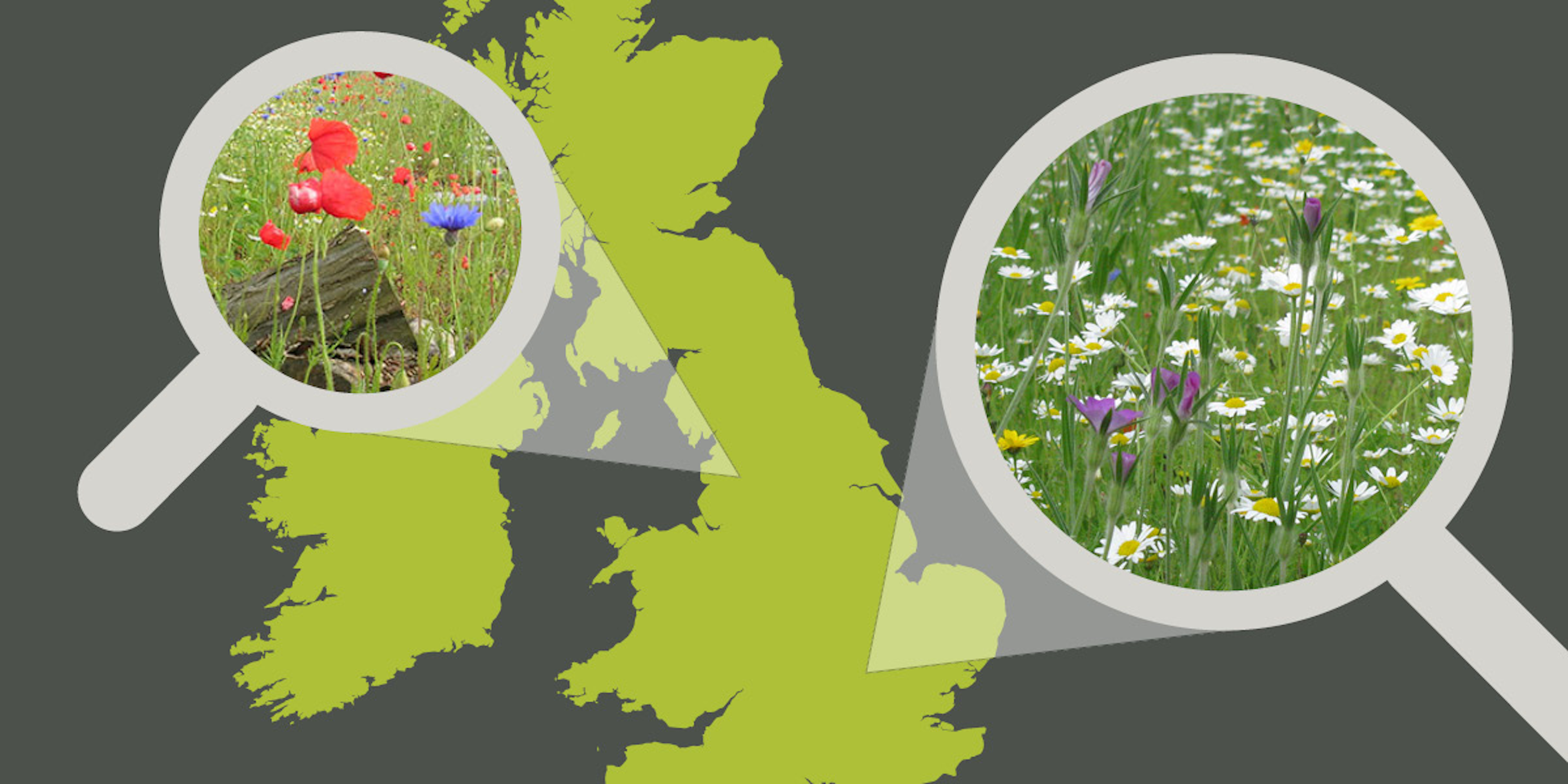When planning a green roof in the UK, you’d be forgiven for thinking that the soil and plant combination from which the roof grows is pretty much the same across the country, possibly with the exception of variations affected by temperature differences between northern, southern and coastal regions.
So it might interest you to learn that here at Viritopia there is such thing as a postcode specific green roof service. When you are planning your green roof, simply get in touch with your postcode and we can create a bespoke green roof for you. We will choose a wildflower seed mix with species specific to your geographical area and sow (or over-sow if mixed with evergreen sedum) the roof with a local seed mix.
This will ensure that you biodiverse roof is planted with the most compatible seed mix of meadow grasses and wildflowers. This means the green roof will thrive in the local environment as well as providing an additional habitat or food source for local wildlife – for example bees will enjoy the nectar provided by the wildflowers.

The main soil types in the UK are clay soils, sandy soils, silt soils, loamy soils, peat soils and chalky soils. Using the Landis map of the soilscapes in the United Kingdom that was developed with Cranfield University you can identify the exact soil type in each postcode area. This can then dictate the seed mix for that area. For example a property in London, SE1 is in an area of loamy soils, therefore we would recommend a meadow mixture for loamy soils. Some of the plant types in this mix would be:
- achillea millefolium
- centaurea nigra
- galium verum
- geranium pretense
- lotus corniculatus
- primula veris
- rumex acetosa
So why not get a green roof to do your bit for biodiversity, and at the same time learn a bit about the soil properties in your area!


